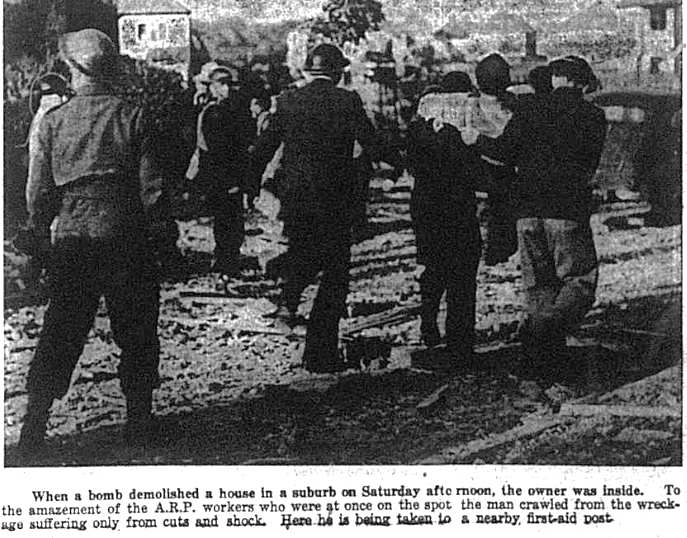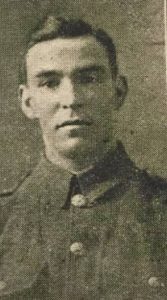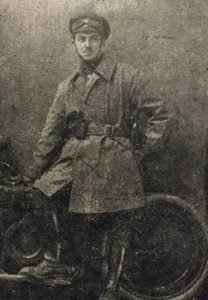When a bomb demolished a house in a suburb on Saturday afternoon, the owner was inside. To the amazement of the A.R.P. workers who were at once on the spot, the man crawled from the wreckage suffering only from cuts and shock. Here he is being taken to a nearby first-aid post.
Press Censorship during World War Two
Newspapers rarely gave details of the exact location of successful bombing raids, so we may never know where this incident happened, nor who the lucky survivor was.
When war broke out in 1939, a handful of new government departments were created to help organise life on the Home Front. The Ministry of Information was designed as the centre for the distribution of all information concerning the war, and was responsible for both the issue and censorship of news.
During the Second World War, press censorship worked on a principle of self-enforcement. Issued with guidance about topics that were subject to censorship, newspapers were invited to submit any story that might be covered by these so-called ‘Defence Notices’. Submitted stories were scrutinised by the censor and edited in accordance with the guidelines. Any information of potential military significance – from weather reports, to the exact location of air raid attacks or troops – would be removed.
Stories which were suitable for publication, got returned to the newspaper bearing an official stamp, with any necessary changes marked in a blue pencil. Any story that was not ‘Passed for Censorship’ was liable for prosecution if it were found to contravene the guidelines. Most newspapers chose to just given minimal location information, such as ‘South-East village’ or ‘suburb’.
Sources:
Article published in the Bromley & District Times, 18th October 1940 [page 5]
Further reading; Chaos and Censorship in the Second World War





